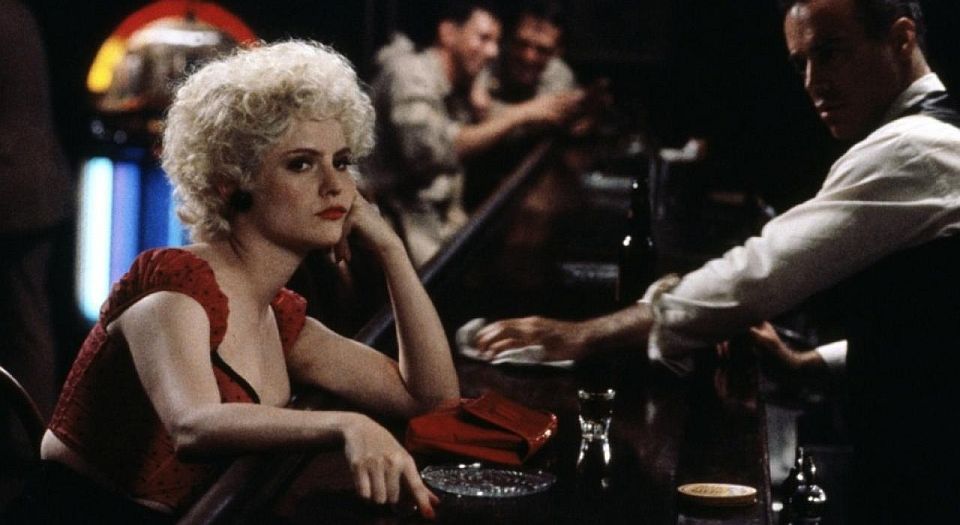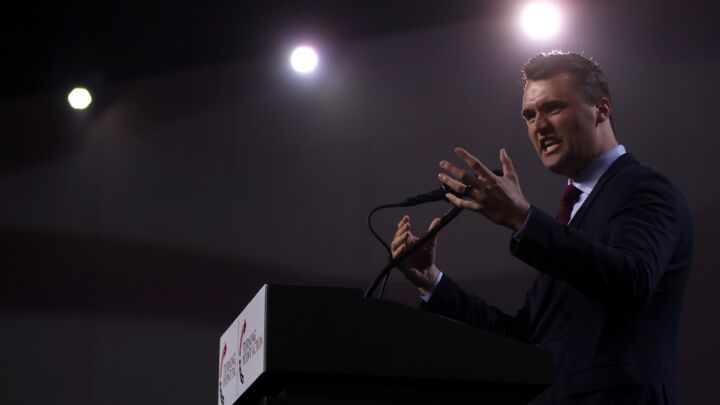
Long-read
Hubert Selby Jr’s war on God
Last Exit to Brooklyn is a testament to a deeply humanist sensibility.
Want unlimited, ad-free access? Become a spiked supporter.
Fifty years ago this July, John Mortimer QC successfully appealed the banning of Hubert Selby Jr’s first novel, Last exit to Brooklyn (1964). It had originally been published in the UK in 1966, by publishers Marion Boyars and John Calder. But within a few months, Wimbledon MP Cyril Black brought a private prosecution against Last Exit’s UK publishers under the Obscene Publications Act. Mortimer’s subsequent and victorious appeal is said to have changed the legal and moral framework of censorship in the UK forever.
Such a judgement is understandable. Last Exit was the last work of literature to be prosecuted for obscenity in the UK. So its unbanning was a significant milestone. Yet one should also note that the Obscene Publications Act was widely viewed at the time as an increasingly prudish piece of legislation, out of step with contemporary tastes and mores. It was also notoriously vague, with a remarkably low threshold as to what might be defined as likely to ‘deprave and corrupt’.
The problem with the subsequent notoriety of the book, and its status as a cause célèbre of British anti-censorship, is that this has overshadowed Last Exit itself – the visceral power of its prose and the profundity of Selby’s moral universe.
This is not to say its content is unshocking, even by contemporary standards. Set in decaying inner-city postwar Brooklyn, Last Exit comprises six short stories and tells the often violent tales of four central characters – Georgette, the doomed drug-addicted drag queen; the exploited but equally rapacious teenage prostitute, Tralala; Abraham, the Negro pimp; and Harry, a violent, out-of-control union agitator with homosexual tendencies.
But as Anthony Burgess – a witness for the defence in the original 1967 obscenity trial – put it in his 1968 introduction:
‘It is unfortunate that so many newcomers to Last Exit to Brooklyn will be approaching it in a muddle of expectation that, thanks to its long ordeal in the courts, has more to do with what has been said about the book than what the book itself says.’ (1)
This ‘muddle of expectation’ surrounding Last Exit has resulted in a view of the novel as, at worst, titillating pornography – on its publication in the US (in 1964) by Grove Press, Time magazine called it ‘Grove’s dirty book of the month’ – and, at best, as a novel intent on exposing social injustice. Both do Selby and Last Exit no favours.
Examples abound of the misleading characterisation of its content. Following Selby’s death at the age of 75 in 2004, the Guardian’s obituary referred to Last Exit as a ‘raunchy novel’. Even the most libertarian eroticist would be hard pressed to find ‘raunchy’ the story of a gang rape of the 15-year-old Tralala, violated with a broom stick and left for dead, ‘naked, covered with blood and urine and semen and a small blot forming on the seat between her legs as blood seeped from her crotch’.
But perhaps the most pronounced misunderstanding and misinterpretation of Last Exit has come in the guise of praise. Its US publisher, Grove Press (home of William Burroughs, John Rechy, Allen Ginsberg and Jack Kerouac), characterised Selby as if not a Beat per se, then certainly Beat-ish. Selby was dogged by this claim that he was some kind of missing link between, as one critic puts it, ‘the naturalistic literary agenda that began with Stephen Crane and Frank Norris in the last years of the 19th century [and the] counterculture that began with the Beat Generation in the 1950s and exploded in the 1960s’. (2)
Beat poet Allen Ginsberg heralded Last Exit as a novel that would ‘explode like a rusty hellish bombshell over America’. However, despite his proximity to the Beats, Selby is the most un-beatified of the writers who were to emerge in postwar America. He was born in Brooklyn in 1923 to parents he, tongue in cheek, described as middle class ‘in the same way that 95 per cent of Americans during the Depression were middle class’ (3). Selby, who left school at 15 to join the US Merchant Marine in 1944, is an ill-fitted companion to the largely middle-class, university-educated, drop-out Beats. While they sought aesthetic alterity in illicit substances and Eastern spirituality, Selby’s love-hate relationship with narcotics, alcohol and God was a very real matter of life and death.
At the age of 18, while in the Merchant Marine, Selby contracted tuberculosis in both lungs. Given but a few months to live, he was shipped back to the US to die. But after three years in a hospital bed, one lung and 10 ribs lighter, and addicted to highly toxic prescription drugs – which impaired both his vision and hearing, and left him unable to walk unaided due to the petrifaction of his muscles – Selby was to reflect: ‘All in all I have spent a lot of time and energy, as well as money, just staying alive. But here I is.’ (4)
Six years later, he was readmitted to hospital this time with extreme asthma – his one remaining lung now failing. But, as Selby quipped, ‘dying was a way of life’, and he refused to keel over just because a doctor had told him to. Still, his proximity to death terrified him, not because he would one day die, but because the inevitability of death brought the fact that he had done nothing with his life into sharp relief:
‘The thought that I would live whatever number of years and look back on it and see I hadn’t done anything with my life, had wasted it, was something I just could not live with. So I decided to write.’ (5)
A lover of Beethoven, Selby nurtured the fantasy of becoming a composer, but only nine years of schooling and no musical training did for that. He did know the alphabet so, he figured, why not try writing. After all, lying on his back for years in hospital, Selby had little time for anything else but books – everything from the hardboiled tough-guy fiction of Mickey Spillane to Gil Sorrentino’s postmodern metafiction. (Sorrentino was to become Selby’s close friend and mentor, and Last Exit is dedicated to him.)
He bought himself a portable Remington typewriter, and taught himself to write. The first thing he wrote was a letter, to which the addressee replied, so he wrote another. The first piece of fiction he wrote was a suicide note. Writing, like much of Selby’s life, did not come easy. But it was keeping him alive.
Selby’s narrative style, a form of typography that ‘would work as musical notation’ – a direct development of his love for classical music – dispensed with the conventional formalities of dialogue. Selby had a profound dislike of the simplistic and unrealistic ‘he said, she said’ device. Selby’s characters speak with an idiosyncratic flow. Each can be identified by their own rhythms of speech. The form and structure of dialogue is specific to the feel and flow of emotion that shapes each character’s inner life. Of ‘Tralala’, the story of the eponymous teenage prostitute, Selby wrote:
‘About 20 pages long, took 2 1/2 years to get to that point. The story starts with a very short, flat line, then starts to open and flow as she does, until eventually the line never ends as she starts to disintegrate and the final line is a couple of pages long, having the feeling of utter chaos, and never really ends, but stops… When I finished ‘Tralala’ I was in bed for two weeks.’ (6)
Praised as naturalistic in theme, but highly modernist in technique, Last Exit has been misinterpreted as socially aware fiction – its protagonists the victims of the cruelty they experience and endure. As this orthodox reading goes, Tralala, Georgette, and Harry – trapped, brutalised and condemned by the cold, corrupting squalor of the inner city and the society that built it – should be pitied. Their depravity and self-loathing are the determined consequences of their squalid environment.
That those who sought to prosecute Last Exit misrepresented or at best misunderstood its subject matter as obscene is one thing, but it is not without Selbyesque irony that those who jumped to its defence, and have promoted it as art, also ended up condemning him. So in his defence of Last Exit, Anthony Burgess extols its biting exposé of the cruelty of modern society:
‘Last Exit presents social horrors out of reformist zeal, not out of a desire to titillate or corrupt. Those who found the book capable of debauching its readers were evidently most debauchably and regrettably cut off from the desire to expand their charitable propensities… Those who now approach Last Exit with open minds will soon consider that there is plenty of reforming to do well east of Brooklyn, and our professional reformers must be the first to be reformed.’ (7)
This characterisation of his work as social realism was something Selby railed against. In an interview with John O’Brien, he claimed his characters were not victims. They were not victims of plot – because there was none – nor were they victims of circumstance – because this would simplistically mean that if their circumstances were to change then they would have lived better lives. This is too easy an answer, a convenient get-out that avoids the uncomfortable and often traumatic responsibility of self that underpins Selby’s humanism. He continued:
‘One of the things I find insane is that we seem to believe in this country that if we change the society, then the individual will be changed. That doesn’t happen. The transformed individual makes a transformed world. All these people I write about are looking to outside forces to do something for them. Not one of them wants to know what he can do for someone else… Of course the sociologists say, “Look at the society and what they’re born into” – which is true; but ultimately that doesn’t mean anything because that society is made up of individuals who have made those decisions. Sooner or later you have to be willing to accept the responsibility for your own life.’ (8)
It is the failure to take responsibility that condemns the inhabitants of Last Exit, not their environment, circumstance or immorality. As Selby argues: ‘All of the people in my novels fail because of [a] lack of control. Not because they are immoral by anybody’s standards, but because they lost control. The lack of power is their dilemma.’ (9)
This is the moral heart of Last Exit, and the spirituality that informs its humanist whole. Selby castigates his characters for their continued ‘surrender [of their] problems to God’. It represents a recourse to external causes to explain away or justify their refusal to take responsibility for their actions. Selby, a devout Christian, claimed that writing Last Exit was a way of ‘going to war’ with God, an attempt to resist his own ‘surrender to God’ – ‘the hatred helped keep me alive’, he later acknowledged (10).
Selby’s idiosyncratic, experimental style – flowing unending sentences; the use of the back-slash rather than the apostrophe because it was both nearer at hand on the typewriter and expressed Selby’s sophisticated but violent sensibility – was not a rejection of the world, but a steadfast attempt to connect with it. He understood the world as a painful place. But, unlike the Beats, he embraced the pain and strove to transcend it. He understood that the mundanely traumatic struggles that shape our internal lives are essential aspects of being human. It is the inner lives of his characters, not their external circumstances, that shape their worlds.
Precisely because of its visceral obscenity, Last Exit to Brooklyn is a fundamentally humanist novel. And as such, it is far closer in spirit to the Enlightenment than the beatific sensibilities of 1960s counterculture. Indeed, its steadfast refusal to sentimentalise its subject and its visceral insistence on individual moral responsibility make it a necessary antidote to the increasingly solipsistic disavowal of subjective agency that increasingly characterises the contemporary moment.
Carlton Brick is a lecturer in sociology at the school of media, culture and society, University of the West of Scotland.
(1) ‘Introduction’, by A Burgess, in Last Exit To Brooklyn, by H Selby Jr (Calder & Boyers, 1968, pXVII
(2) Understanding Hubert Selby Jr, by JR Giles, South Carolina Press, 1998, p11
(3) Cit. Understanding Hubert Selby Jr, by JR Giles, South Carolina Press, 1998, p7
(4) ‘Introduction’ to Last Exit to Brooklyn, by H Selby Jr, Bloomsbury, 1994, pV
(5) ‘Introduction’ to Last Exit to Brooklyn, by H Selby Jr, Bloomsbury, 1994, pV
(6) ‘Introduction’ to Last Exit to Brooklyn, by H Selby Jr, Bloomsbury, 1994, ppXI-XII
(7) ‘Introduction’, by A Burgess, in Last Exit To Brooklyn, by H Selby Jr (Calder & Boyers, 1968, pXVII
(8) ‘A Conversation with Hubert Selby’, by John O’Brien, The Review of Contemporary Fiction, Summer Vol 12, 1981
(9) ‘A Conversation with Hubert Selby’, by John O’Brien, The Review of Contemporary Fiction, Summer Vol 12, 1981
(10) Cit. Understanding Hubert Selby Jr, by JR Giles, South Carolina Press, 1998, p2
You’ve read 3 free articles this month.
Support spiked and get unlimited access.
Help us hit our 1% target
spiked is funded by readers like you. It’s your generosity that keeps us fearless and independent.
Only 0.1% of our regular readers currently support spiked. If just 1% gave, we could grow our team – and step up the fight for free speech and democracy right when it matters most.
Join today from £5/month (£50/year) and get unlimited, ad-free access, bonus content, exclusive events and more – all while helping to keep spiked saying the unsayable.
Monthly support makes the biggest difference. Thank you.







Comments
Want to join the conversation?
Only spiked supporters and patrons, who donate regularly to us, can comment on our articles.